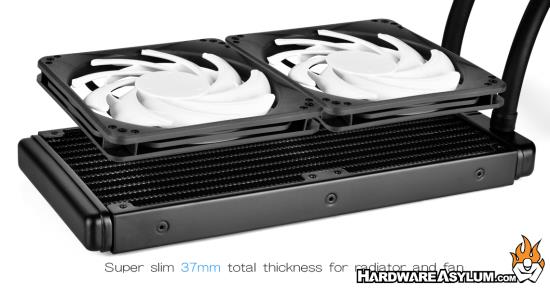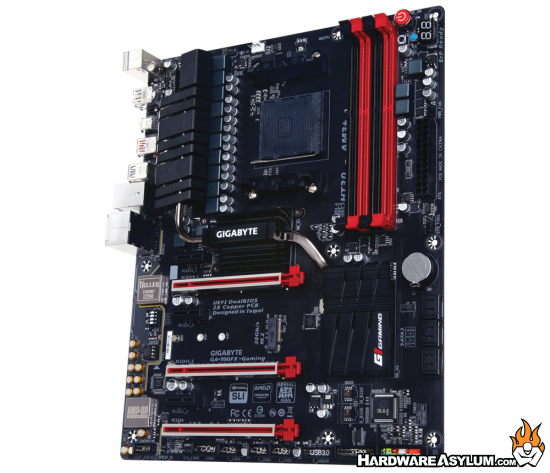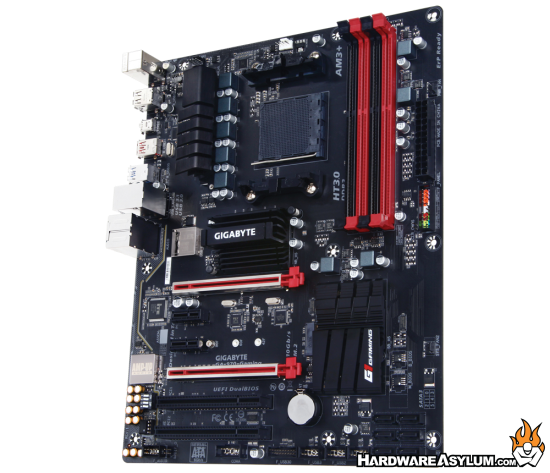Tech News
-
4 Weeks with NVIDIA TITAN X SLI at 4K Resolution @ [H]
Ever wondered what it would be like to run two monster video cards at 4K? Seems HardOCP has tackled that challenge and is ready to report.
What do you get when you take two NVIDIA GeForce TITAN X video cards, configure those for SLI, and set those at your feet for four or more weeks? We give our thoughts and opinions about actually using these behemoth GPUs in our system for weeks and weeks and focus on gaming performance, sound profile, heat generation, and general usability.
It is good to see other editors using Silverstone products. In this article Kyle talks about how he likes the Raven 3 which is also the case I used for my LAN Party build. I used a X99 motherboard and 980Ti Classified in my build so almost the power of a Titan X in a nice overclocker friendly package.
-
SilverStone Tundra TD-02 Slim AIO CPU Cooler Review @ [H]
I was able to review the Tundra TD-02 several months ago and found the system to be extremely good. The cooler uses a custom designed radiator and is matched with superior multi blade fans for good airflow.

One obstacle that often stands in the way of adding an AIO to your system is space to do so. In a smaller computer chassis, many times the thickness of the radiator can be an issue. Silverstone is looking to solve your space issues with a new Tundra series All-In-One cooler that is specific to this footprint need.
HardOCP is looking at the "slim" version of this cooler which features a much thinner radiator, 15mm thick fans and slightly redesigned internals. The loss in water volume will have an impact on overall heat capacity but the large dual 120mm radiator makes up for some of that.
-
ARMA 3 gets NVIDIA HBAO+ and Better Shadows
One of the most popular open-world tactical military shooters is ARMA 3. It currently resides 17th on the Steam charts of popular games and uses NVIDIA PhysX to enhance the realism in games.
Today Bohemia Interactive has released a patch for ARMA 3 that includes two more NVIDA based technologies including ShadowWorks and HBAO+ (Horizon Based Ambient Occlusion)
One of the best things about PC gaming is the breadth of experiences on offer - whether you like World War I hex games, side-scrolling co-op puzzle platformers, or twitch multiplayer shooters, there's something for you. If your jam is modern-era, combined arms, tactical military shooters, there's no better choice than Arma 3. Offering land, air and underwater combat, in single-player missions and online with dozens of other players, Arma 3 is the culmination of Bohemia Interactive's tactical-gaming efforts that began back in 2001 with Operation Flashpoint: Cold War Crisis.
Personally I have never played ARMA 3 but have heard good things about the game including the graphical detail. By adding enhanced shadows the game developer adds even more depth to the scenes which can only be experienced on NVIDIA based graphics.
-
The Elder Scrolls VI - More than just Skyrim 2
I have been reading quite a few discussions over the next installment to "The Elder Scrolls" and while I can't find a single news article about it that isn't complete garbage or littered with more ads than text I have gathered the following information.
- The release date is rumored to be mid 2019 giving Bethesda 3 years to develop the game engine, story and artwork for the new title.
- Rumors state that it will be set in a new location, Argonia. Bring on the lizard people

- There won't be any multi-player DLC which falls in line with previous games and keeps Elder Scrolls Online safe from competition.
- Maybe the best news is that most people are expecting to see "something" about The Elder Scrolls 6 at E3 in June.
I'm not going to say I know all that much about The Elder Scrolls franchise. Heck, I have only played Skyrim but really enjoy the story and gameplay. The open world aspect of the game really appeals to me and allows you to really get lost in the storyline.
Let's hope the next installment is just as good if not better.
-
Cooler Master Case Mod World Series 2016 - Registration Open
Calling all casemodders!!
Cooler Master is hosting an excellent casemodding competition with $30,000 in cash and prizes up for grabs!!

I have done a fair amount of casemodding over the years with five notable projects featured here on Hardware Asylum. While my projects are mostly done for fame and recognition I have never really considered entering a full on competition, until now.
To enter the “Case Mod World Series” head on over to mod.coolermaster.com and sign up.
Registration is currently open with the competition running from January 26th until June 12th. Which is the week following Computex.
Entering is easy and broken into two steps:
First: Create an account on the Cooler Master Forums and start your worklog.
Second: Register your Cooler Master Forum account with a public modder profileBe sure to check out the Rules, look over the FAQs and understand the Terms and Conditions. They are all important for your casemodding project to be valid.
-
Building a LAN Party Rig
I'll be attending a LAN Party event this weekend and wanted to put together something special for the occasion. Normally for a LAN event I would try to build something small and powerful however, I'm rocking three Mini ITX systems in the Hardware Asylum Labs and none of them are gaming ready so I had to go old sk00l.

I'm detailing the assembly process of my LAN Rig in the Hardware Asylum Forums so be sure to check it out. Overall the hardware is a bit "excessive" but should fit the theme in the classic sense that flash is the most important part.
As an added bonus I'll even be showing you how to secure your panel sides if your particular case doesn't come with a factory panel lock. This seems to be a common oversight with many modern cases that plagues both expensive and cheap alike.
-
GIGABYTE Presents the New AM3+ Ready 970-Gaming and 990FX-Gaming Motherboards
City of Industry, California, February 12, 2016 – GIGABYTE TECHNOLOGY Co. Ltd., a leading manufacturer of motherboards and graphics cards, is proud to unveil today to all its AMD motherboard enthusiasts the new GA-990FX-Gaming and GA-970-Gaming, based on the highly anticipated AMD® 970 and 990FX + SB950 chipset respectively, and compatible with the latest AMD socket AM3+ high performance processors.
GIGABYTE 990FX-Gaming and 970-Gaming product highlights:
Fast USB 3.1 over USB Type-C™ and Standard-A port for maximum compatibility.
PCIe Gen2 x4 M.2 connectors with up to 20Gb/s Data Transfer (Includes PCIe NVMe & SATA SSD support).
AMP-UP™ Audio technology featuring upgradable OP-AMP, two USB DAC-UP and a Realtek ALC 1150 audio processor with support 115dB SNR HD audio.
High-End gaming network port powered by Killer™ E2201
2-Way graphics support for the best gaming experience
GIGABTYE EXCLUSIVE: Ultra Durable™ PCIe metal shield, DualBIOS™ technology and GIGABYTE APP Center Including EasyTune™ and Cloud Station™ Utilities990FX-Gaming

970-Gaming

Fast USB 3.1 Solution
The latest USB 3.1 Gen.2 offers transfer speeds of up to 10 Gb/s. With twice the bandwidth compared to its previous generation and backwards compatibility with USB 2.0 as well as 3.0, USB 3.1 is available via USB Standard-A and the reversible USB Type-C™ making GIGABYTE the best USB 3.1 solution on the market with better compatibility over a wider range of devices.
GIGABYTE Premium Graphics
Multi-graphics configuration offers better graphics performance for gaming enthusiasts who demand the highest frame rates without compromising on resolution. While the GIGABYTE 970-Gaming motherboards can support 2 AMD graphics card in Crossfire™ configurations, the PCIe lane configuration of the 990FX-Gaming allows you to benefit from either AMD 2-way Crossfire™ or NVIDIA 2-way SLI™ technology.
Fast Onboard Storage with 20 Gb/s M.2
GIGABYTE M.2 solution offers considerably faster storage performance and support for both PCIe and SATA interfaces for M.2 SSD devices. Using PCIe Gen.2 x4 lanes, the onboard M.2 can deliver up to 20Gb/s of bandwidth, more than 3 times faster than SATA3. With this added bandwidth, M.2 storage devices are ideal to install your PC operating system and frequently used programs or data for fast boot-up times and the best responsiveness.
High Definition Audio Design
The Realtek ALC1150 is a high-performance multi-channel high definition audio codec that delivers an exceptional audio listening experience with up to 115dB SNR, ensuring users get the best possible audio quality from their PC. High Quality audio capacitors deliver the highest quality sound resolution and sound expansion to create the most realistic sound effects for professional gamers. In addition to the industry leading audio hardware, GIGABYTE motherboards feature LED lighting for the audio trace path, providing a cool, custom look to your rig. Not only does the Audio Noise Guard protect the board's sensitive analog audio components, but its LEDs can also be programmed to beat at the rhythm of the music you are listening to, or pulse at a soothing pace to create a great atmosphere to enhance the experience of your game, movie or music
Ultra Durable PCIe Metal Shield
GIGABYTE presents its latest innovation within its Ultra Durable technologies with the PCIe One Piece Metal Shield. Add-in cards can be extremely heavy, especially long graphics cards, and removing them can put a lot of stress on the connector. The innovative one-piece stainless steel shielding design from GIGABYTE reinforces the PCIe connectors to provide the extra strength required to support heavy graphics cards.
Killer™ E2200 Series Gaming Network
The GIGABYTE 990FX-Gaming and 970-Gaming features Killer™ E2201, a high-performance, adaptive gigabit Ethernet controller that offers better online gaming and online media performance compared to standard solutions.
For more details about the GIGABYTE 990FX-Gaming motherboard,
For more details about the GIGABYTE 970-Gaming motherboard, -
Intel shuts down the cheap overclocking party
I have resisted commenting on the story about how Intel is closing the door when it comes to overclocking non-K series processors. At first I didn't think it was a big deal. There has always been politics between what Intel wants and what Motherboard makers deliver and that interaction is shady at best.
Thing is, the more I think about it the more concerned I get.
As the article states a loophole exists in the UEFI (BIOS) code that allowed people to overclock Intel CPUs using the BCLK (or Base Clock). Fact is: you have always been able to do that since the inception of BCLK. Some processors would clock better than others and I also noticed that some motherboard makers would disable BCLK adjustments either by removing the option or by causing the system to crash when you make a change.
Overclocking with the BCLK is an advanced feature and will alter the clock of EVERYTHING and anyone who tells you different doesn't understand how it works. Some CPUs respond well to BCLK adjustments and certain motherboards are less sensitive to being ot of frequency. In those instances you can really make a system fly, mostly due to the higher multipliers used on these non-K CPUs.
That’s basically a kinder way of saying: You shouldn’t be overclocking these CPUs, so stop it.
Why this matters: Since December, overclockers have been able to run lower-priced CPUs above their rated speeds by cranking up the bclock setting on a chip. Intel normally charges more for such capability, so budget-minded overclockers were overjoyed. That party, though, is about to end.Intel is in the right to block overclocking. The way they see it they gave us unlocked processors and have their accounting department cook the books to show it was a good thing. Sure, they are expensive and 90% of people using them either never touch the overclocking controls or send everything back broken because they shoved a PBnJ into the socket pins and blew it up. (yes, I just called them idiots).
The part of this that bothers me the most is the future. Without "some" kind of overclocking beyond what the K SKU can provide there is virtually nothing to further the PC hobby with the casual enthusiast. Sure you can spend the bucks and buy the good stuff (highly recommended btw, 10/10 would do again) but that leaves nothing for the budget people to experiment with and thus removes any desire to actually buy the good stuff.
I'm sure there is a deep rooted reason and for all this and anyone who has done a support call with Intel will know where cost savings have gone.
-
SoundCloud could be forced to close after losing $44 million
This makes me sad and happy at the same time. SoundCloud had a great service and allowed users to tag certain parts of a song with comments. In a way it was Social Media for audio files but lacked any incentive for others to do the same.
Later I found out that they would charge content providers a monthly fee to host their content with really no recourse for the provider to make any income from it. Sadly, I prefer the YouTube method, it is ad supported and super annoying but, doesn't cost the content provider anything and they get a cut of the profits. (No wonder people are flocking to get a cut of that)
In a statement given to FACT, SoundCloud said that the figures “reflect those of a company in a strong growth stage,” which still has “over 18 million creators are using the platform, sharing well over 110 million tracks, and reaching 175 million monthly active listeners.”
With that kind of traffic it makes you wonder why they would have to close over a lost 44 million. It will be interesting to see what happens.
-
Throwback Thursday: The Foxconn Bloodrage X58 Overclocking Motherboard
Enthusiast computer hardware sees an ongoing juxtaposition between style and performance and there comes a time when you simply cannot live without them both. The Foxconn Bloodrage is the epitome of this and is one of the rarest of unicorn hardware made popular by Nehalem and Gullftown overclocking.

So what made this motherboard such a great overclocker?
Good manufacturer support and premium BIOS tuning are key ingredients when it comes to overclocking and Foxconn continued support for this motherboard long after the launch. It also helped that Shamino was working for Foxconn at the time and his popularity in the overclocking circles added some much needed street cred for an otherwise unknown segment of Foxconn.
Needless to say it was popular because the enthusiast community trusted the hardware and there was a lot you could do with the LGA 1366 line of processors.
In terms of hardware the Bloodrage was fitted with a rather large 14 phase VRM and was one of the few boards to come with only 3 memory slots. This decision proved crucial to enhancing memory performance despite the market demands of providing two memory banks.
Another key feature was the inclusion of multiple Quantum Force branded North bridge cooling options that replace the large aircooled unit. Also for those dabbling with LN2 a handy Quantum Force branded evaporator pot was included which was an industry first.
Sadly the Quantum Force division of Foxconn was on a decline after the launch of the Bloodrage. They had a few successful motherboard launches but decreasing margins and intense competition forced Foxconn to close their retail lines. Shamino also left soon after to help EVGA launch their Classified line of motherboards and video cards. These are now being driven by another famous overclockinger, K|ngp|n and are quite good.

